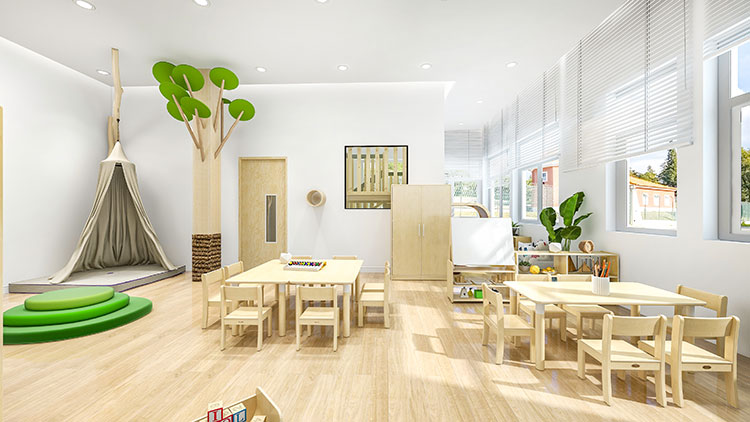
Optimizing Learning Spaces: Unveiling Montessori Classroom Layout Essentials
In the realm of education, the physical environment plays a crucial role in shaping the learning experience. The Montessori approach, renowned for its child-centered philosophy, places significant emphasis on the layout of the classroom. This article delves into the essentials of Montessori classroom layout, exploring how the arrangement of space can profoundly impact a child’s educational journey.
Understanding Montessori Classroom Philosophy
At the core of Montessori education is the philosophy that children learn best when they are actively engaged in their environment. The classroom is viewed as a prepared environment that caters to the developmental needs of each child. Montessori classroom layouts are intentionally designed to promote independence, exploration, and a love for learning.
Creating Purposeful Workspaces
Montessori classrooms feature carefully curated workspaces that are purposefully arranged to encourage independent learning. Each area is dedicated to specific activities, fostering a sense of order and organization. The design is intentional, allowing children to navigate the space with ease and choose activities that align with their interests and developmental stage.
Utilizing Montessori Materials and Tools
A distinctive aspect of Montessori classrooms is the use of specialized materials and tools designed to facilitate hands-on learning. The layout incorporates easily accessible shelves displaying these materials, promoting self-directed exploration. Montessori educators strategically organize materials to encourage sequential learning, building upon a child’s understanding at their own pace.
The Role of Nature and Natural Light
Montessori philosophy values the connection between the child and nature. Classroom layouts often integrate elements of the outdoors, with large windows providing ample natural light. The presence of plants and natural materials contributes to a calm and inviting atmosphere, creating a conducive environment for focused learning.
Freedom of Movement and Classroom Flow
Unlike traditional classroom setups, Montessori layouts prioritize freedom of movement. The design allows children to move about the classroom independently, choosing activities and interacting with their peers. The flow of the classroom is carefully considered, with an aim to minimize obstacles and disruptions, allowing for a seamless and uninterrupted learning experience.
Exploring Montessori Classroom Layout
For a more in-depth exploration of Montessori classroom layout and its practical implementation, visit www.igaseng.com. This comprehensive resource offers insights, tips, and examples for educators seeking to optimize their learning spaces in alignment with Montessori principles.
Promoting Collaborative Learning Environments
While independence is a cornerstone of Montessori education, collaborative learning is equally valued. Classroom layouts are designed to include spaces for group activities, encouraging communication and cooperation among students. This balance between independent and collaborative learning contributes to the holistic development of each child.
Personalized Learning Spaces for Every Child
Montessori classroom layouts recognize and celebrate the individuality of each child. The design accommodates various learning styles and preferences, allowing children to choose the environments that best suit their needs. Personalized learning spaces contribute to a positive and empowering educational experience, fostering a love for learning that extends beyond the classroom.
Cultivating a Sense of Order and Responsibility
Montessori classrooms are characterized by a sense of order and structure. The layout reinforces the importance of returning materials to their designated places, instilling a sense of responsibility in the child. This intentional design element contributes to the development of executive functions and organizational skills.
Conclusion: The Impact of Thoughtful Classroom Design
As we explore the essentials of Montessori classroom layout, it becomes clear that thoughtful design is a catalyst for optimal learning experiences. The arrangement of space, incorporation of nature, and emphasis on independence collectively create an environment where children thrive academically, socially, and emotionally. By understanding and implementing Montessori principles in classroom layout, educators pave the way for a transformative and enriching educational journey for every child.



